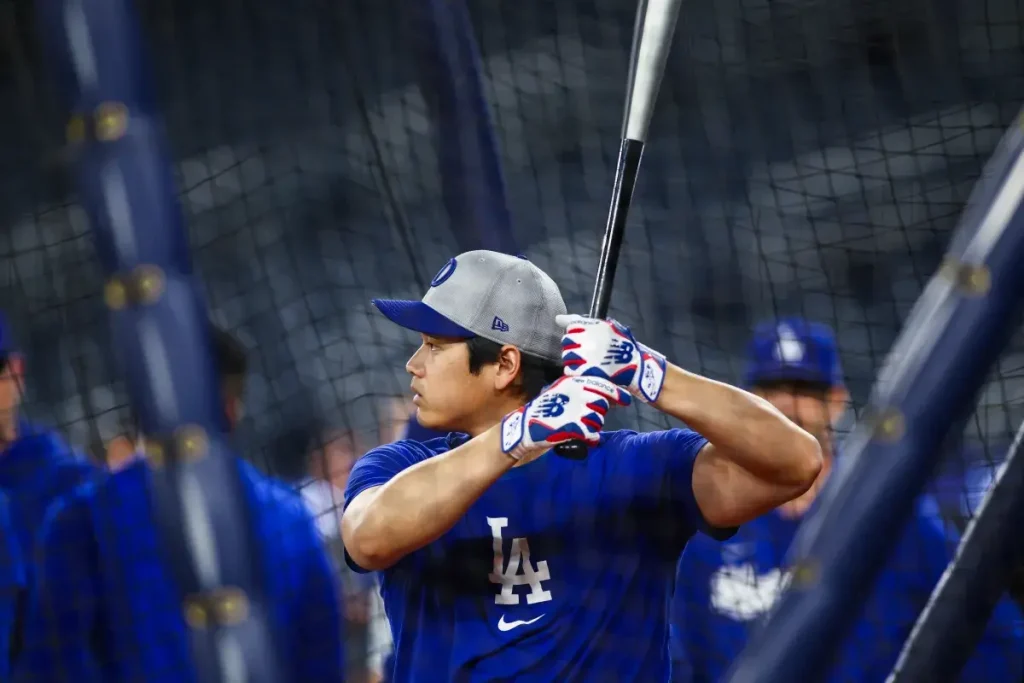Shohei Ohtani’s Unexpected Batting Practice Change Pays Off in Postseason
In a surprising departure from his established routine, Los Angeles Dodgers superstar Shohei Ohtani emerged onto the field for batting practice before Game 3 of the National League Championship Series against the Milwaukee Brewers. This move raised eyebrows throughout the baseball world, as Ohtani has long been known for his strict preference for hitting work exclusively in the batting cage. The Japanese two-way phenom had been struggling through a hitting slump in the postseason up to that point, which apparently prompted him to reconsider his approach. The unexpected change seemed designed to shake things up and potentially break him out of his offensive struggles as the Dodgers pushed deeper into October.
The results of this adjustment proved nothing short of spectacular. After a modest 1-for-4 performance in NLCS Game 3, Ohtani delivered one of the most remarkable performances in postseason history during Game 4. He put together a perfect 3-for-3 day at the plate, with all three hits leaving the ballpark for home runs. As if this offensive explosion weren’t enough, Ohtani simultaneously dominated on the mound, throwing six shutout innings while striking out ten Brewers batters. This historic two-way performance solidified his reputation as perhaps the most unique talent in baseball history. The dramatic turnaround following his batting practice adjustment did not go unnoticed, with analysts and teammates alike connecting his willingness to change his routine with his sudden postseason awakening.
Clearly pleased with the results, Ohtani continued his new approach on Thursday at Toronto’s Rogers Centre, taking batting practice on the field once again before the World Series opener against the Blue Jays. During the media day preceding Game 1, reporters naturally questioned Ohtani about this notable change to his preparation. Speaking through his interpreter Will Ireton, Ohtani offered a partial explanation: “There’s some things that I want to be able to do on the field that you can only do on the field, so I want to do that and just make sure – especially considering how we just don’t have a lot of games left.” This acknowledgment revealed Ohtani’s practical thinking about maximizing his remaining opportunities in the shortened postseason schedule, while still maintaining some mystery around his process.
When pressed for more specific details about what elements of on-field batting practice he finds particularly beneficial, Ohtani showed his playful side while protecting his competitive advantage. “That’s a secret,” he replied with characteristic restraint, leaving fans and analysts to speculate about the specific adjustments he’s making. This measured response reflects Ohtani’s general approach to his craft—methodical, intentional, and occasionally inscrutable to outsiders. Whatever specific tweaks he’s incorporated into his routine, the results speak for themselves. After breaking out of his slump so dramatically in the NLCS, Ohtani carries tremendous momentum into baseball’s biggest stage, positioning the Dodgers as formidable favorites if he can maintain this level of production.
The timing couldn’t be better for both Ohtani and the Dodgers, as he’ll have the first opportunity to make an impact in the World Series while leading off in Game 1. Despite his remarkable two-way abilities, Ohtani’s participation in the early games will be limited to hitting duties, with his pitching appearance scheduled for either Game 3 or 4 when the series shifts to Los Angeles. This strategic deployment of his talents demonstrates how the Dodgers continue to maximize his unique skill set while managing his workload. For Ohtani himself, this World Series represents the culmination of his first season with the Dodgers after signing a historic contract—and his first-ever postseason appearance after six seasons with the Angels where October baseball remained elusive.
The broader significance of Ohtani’s willingness to adjust his routine extends beyond just this postseason run. It reveals something fundamental about elite performance: even the most talented athletes must sometimes reconsider established patterns when results demand it. Ohtani’s dedication to routine has been well-documented throughout his career, with teammates and coaches frequently noting his methodical approach to preparation. That such a process-oriented star would make this change speaks volumes about both his competitive drive and adaptability. As the World Series unfolds, fans will watch closely to see if Ohtani’s on-field batting practice continues to yield extraordinary results, potentially cementing this small adjustment as a pivotal moment in what could become a championship season for the Dodgers and their remarkable two-way superstar.















